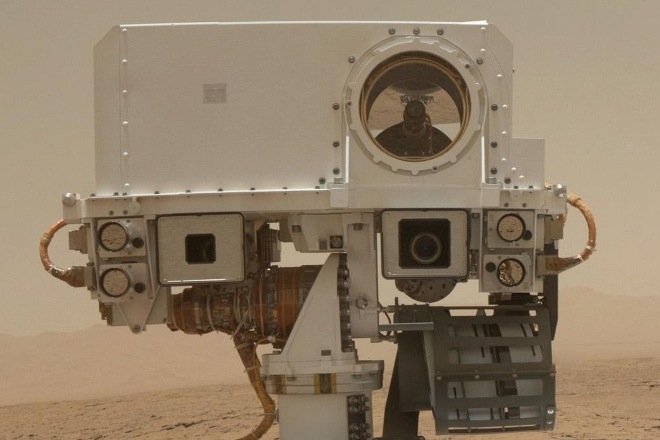Communications of the ACM
All-Woman Team Commands Rock-Zapping Laser on Mars

Los Alamos National Laboratory's ChemCam Engineering Operations team members (left to right) Roberta Beal, Lisa Danielson, Nina Lanza, and Cindy Little.
Credit: LANL
The laser that zaps rocks on Mars is commanded by a talented group of engineers and scientists at Los Alamos National Laboratory—who also happen to all be women, a rarity in the engineering field.
"It's unusual, simply because engineering still tends to be male-dominated," says Nina Lanza, a planetary scientist on the team who has helped recruit some other team members. "Typically on teams like this you'll have a few women, but a majority are men. I don't know of any other instruments on the Mars Curiosity Rover that has an all-female engineering team."
The team of women is responsible for sending commands to the ChemCam instrument, which shoots Martian rocks with a laser to determine their chemical make-up. It was developed at Los Alamos in conjunction with the French space agency and played a key role in the discovery of the existence of an ancient lake on the Red Planet.
The team meets daily with planetary scientists from around the world, who identify which rocks on the surface of Mars to zap and analyze. The engineering team then figures out what commands to send to the ChemCam instrument to make that possible.
"This job requires a lot of long hours and dedication," says Lisa Danielson, the ChemCam Operations manager. "And there's a high intensity that requires excellent communication and teamwork. That's one of the strengths of this team. We work really well together and are very supportive of each other. We create a very positive environment and know that we can depend on each other."
Adds Lanza, "Nobody set out to create a team that was just women. We want the best people for the team. It doesn't matter if they're a man or a woman—what matters is that they have the right set of skills and the right personality."
Both she and Danielson agree, however, that networks are important for driving diversity. "As more women make their way into management positions and places of power, we'll see more of this," Danielson says.
"Women in the sciences know other women in the sciences," Lanza says. "It helps that I have a pool of women in my professional network. That's why a diverse workforce is so important. If you have a diverse team, they'll likely have a network of talented people that you might not have—so you find people you might have never found otherwise."
Danielson also points out that the current ChemCam Engineering Operations team sprung from a critical staffing need and women volunteered to fill it. "I hope more women learn from that—that stepping up to take on a task that furthers your career will pay off, not just for you, but for everyone."

the mast of the Mars Curiosity rover.
No entries found